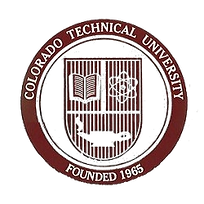Social Responsibility
- Brian Bentley
- Mar 22, 2016
- 4 min read
Social Responsibility
By Brian Lynn Bentley
Colorado Technical University
Social Responsibility TOMS shoes verse Patagonia Inc.
Social Responsibility
The definition of social responsibility is the obligation of a corporation or agencies management philosophy towards the welfare and interests of the nation’s collective ideals in which it is involved in. (http://www.businessdictionary.com/definition/social-responsibility.html)
TOMS Shoes
A man named Blake Myscoskie created a unique business model that incorporated charity and for profit proving that one can do both, One day in 2006 he was travelling through Argentina in 2006 he observed that many children were so poor they had no shoes and where growing up without shoes. He was very disturbed and much moved by this and when he got back home he created TOM shoes based on the business model combining charity and profit for every pair of shoes that sold the company would donate a pair to a needy child. And the business model worked since the free shows where built into the shoe price so the costumers could feel good when they bought a pair for themselves knowing that some poor kid would get a similar pair of awesome brand new shoes. The company’s generous spirit has also made the company successful. (Corporate social responsibility - Companies in the news. 2014).
Patagonia inc
Another company focus was on ecological values to reduce the toxins and pollutions of the traditional manufacturing process of some textiles like cotton. Patagonia is an outdoor clothing company on which the CEO is Rob Bondurant. Patagonia was one of the first companies to start using "organic cotton" in 1996 before it was cool and the thing to do. They went and observed traditional growing methods of content and observes pollution ponds design to catch the run off from the pesticides and chemicals such as selenium, and observed to population around these areas had a higher than normal cancer rate. They decided they had to do something and since 60% of their sales were from cotton, they had convinced many of their farmers and suppliers to go organic and had even subsidized them to do so during the transfer. There costumers felt the same way and made them very successful. and they even teach other corporations how to do the same thing not keeping the secret to themselves, they formed a few educational organizations, Such as cotton exchange and footprint chronical where they have fee trade secrets and describe how they do it one step at a time.
Positive strides and their corporate social responsibility efforts
Both companies are doing extremely ethical and part of the founders core values of each company. I think both companies are doing all they can and all they should for each of the core issues toms is providing new shoes every time a pair of shoes is sold. This is obviously very personal to the founder of TOM’s shoes since he built the business model and pricing plan to accomplish this. The same holds true with the environmental policies of the clothing company to protect the environment, and on top of actually practicing what they preach they also teach others how to do this which I find extremely ethical and moral. Which not totally off topic but on mysteries at the museum from this video here; http://www.travelchannel.com/shows/mysteries-at-the-museum/video/flour-dust-explosion. the owner of this flour mill was so disturbed by the explosions and deaths and the high costs of deaths he thoroughly investigated and cc Washburn found out the fire and explosion was caused by a flour dust explosion and went to find a way to prevent it from ever happening again then hired an engineer and they came up with a dust collector, and CC Washburn gave it to all his completion and companies for free so it would not cause deaths anywhere else this guy reminds me of the other two persons and companies very personal experience or observation causes a motivation deeply held within themselves on a corporate ethical and social responsibility. (Holmes, R. 2009)
Conclusion
The one things both of these companies are doing is there did not start either to look good to others that is just the natural nature of good deeds, both these companies chose a personal issue and incorporated into the business models and these are the personal philosophies and the founders deeply held convictions which both tie in very well into Americans opinions on charity and ecology. The benefit of being natural charitable and environmentally conscious, at least in the USA it’s as good as spending millions on advertisements it does almost the same thing. For my bonus example CC Washburn was so disturbed he gave his technology for free to his competition so they would not experience a similar tragedy.
References
Corporate social responsibility - Companies in the news. (2014). Retrieved from the mallenbaker.net Web site: http://www.mallenbaker.net/csr/CSRfiles/nike.html
Holmes, R. (2009, March 2). 'Wal-Mart wants to be more like us.' Retrieved from The Guardian Web site: http://www.theguardian.com/lifeandstyle/2009/feb/24/patagonia-ethical-outdoor-clothing-interview
Mysteries at the museum. (n.d.). Flour Dust Explosion VIDEO : Mysteries at the Museum : TravelChannel.com [Video file]. Retrieved from http://www.travelchannel.com/shows/mysteries-at-the-museum/video/flour-dust-explosion
What is social responsibility? definition and meaning. (n.d.). Retrieved from http://www.businessdictionary.com/definition/social-responsibility.html

Comments